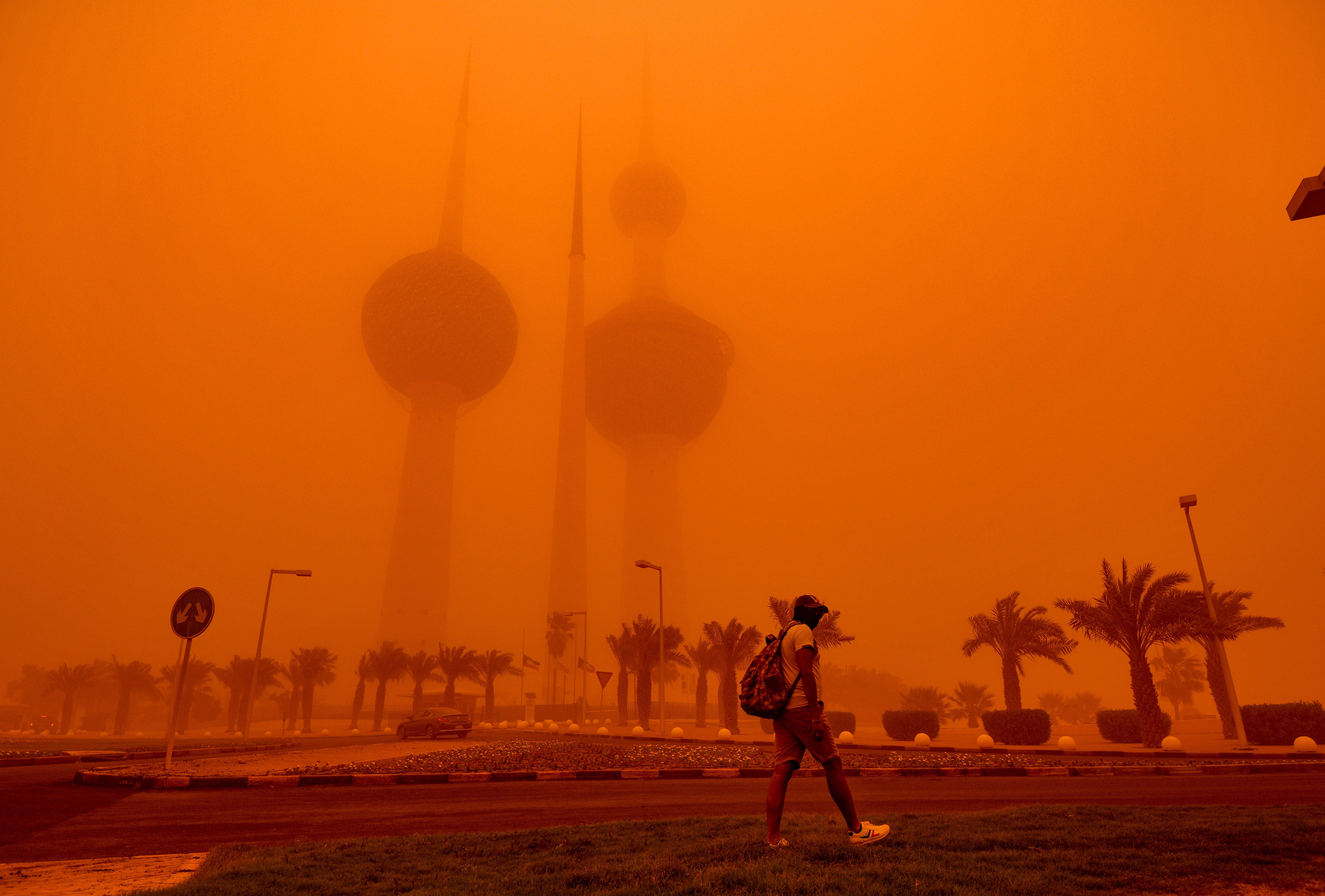Thousands hospitalised as dust storms show Iraq’s growing desertification problem
There could be as many as 300 dust storms each year in Iraq by 2050, Baghdad has warned

Fears are growing about the effects of desertification in Iraq and other countries in the Middle East after they were buffeted by yet another sandstorm this week.
Monday’s storm, the tenth to rip through Iraq in just two months, resulted in hundreds of people being hospitalised with respiratory problems. It also led authorities to urge workers to stay at home.
The warning came after the previous two sandstorms caused one death in Iraq and sent about 10,000 people to hospital with respiratory difficulties.
Dust also turned the sky orange in nearby countries including Kuwait and Saudi Arabia on Monday. As a result, Kuwait International Airport stopped flights for the second time this month.
However, the sandstorms appear to be more of a threat to Iraq than to its neighbours, according to Jaafar Jotheri, a geoarchaeologist at Baghdad’s University of Al-Qadisiyah.
Mr Jotheri said the storms were so intense because of desertification and record-low rainfall in Iraq, which is listed by the UN as one of the five countries most vulnerable to the effects of climate change.
"It’s a region-wide issue, but each country has a different degree of vulnerability and weakness," he said.
"Because of 17 years of mismanagement of water and urbanisation, Iraq lost more than two thirds of its green cover," he added. "That is why Iraqis are complaining more than their neighbours about the sandstorms in their areas."
Given the worsening conditions, there could be more than 300 sandstorms a year by 2050, Iraq’s environment ministry has warned.
Earlier this year, Issa Al-Fayad, a senior official at the department, said the increase in the number of storms was caused by the country’s dwindling water resources. Up to 70 per cent of the country’s agricultural land is at risk of desertification, he added.

“The lack of water causes the continuing decrease in green areas in Iraq due to climate change,” he said. “And delays in funding have caused delays in establishing green belts in Iraq.”
His comments followed the publication of a World Bank report last November, which warned that Iraq’s 20 per cent drop in water supply could cut the country’s GDP by as much as 4 per cent.


Join our commenting forum
Join thought-provoking conversations, follow other Independent readers and see their replies
Comments